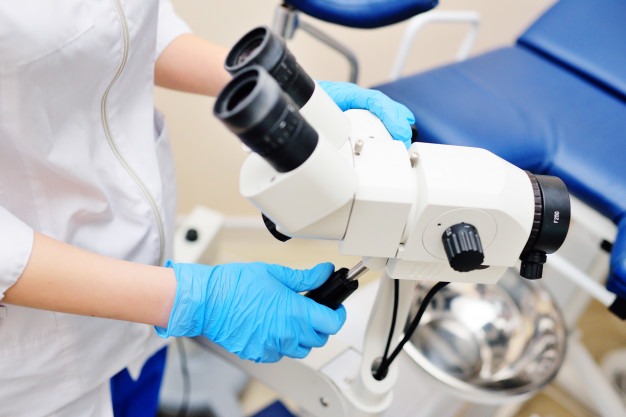What is cold coagulation?
Cold coagulation is a procedure used to destroy abnormal cells on the cervix (neck of the womb). This is done using a heated probe which destroys the abnormal area. Local anaesthetic is injected into the cervix to numb the area. You may experience mild period discomfort during the procedure but it should not be painful. The heated probe is applied for 30 seconds – some women require more than one application but the whole procedure takes about 10 minutes.
Why should I have cold coagulation treatment?
This procedure is being performed to destroy the abnormal cells on your cervix, which will help to reduce the risk of developing cervical cancer in the future.
What exactly happens when I come for treatment?
Treatment is very similar to that of the colposcopy examination. You will have a consultation with the gynaecologist first, and then you will be taken into the examination room. When you are in a comfortable position your gynaecologist will gently insert a speculum into the vagina, the same as when you have a smear test, and will then use the colposcope to examine the cervix and also dab on the different liquids to help identify and highlight the abnormal areas. Once this has been done the abnormal areas will be numbed using local anaesthetic and time will be given for the local anaesthetic to work. Then the treatment will be carried out and can take around 10 minutes in total. After the treatment the speculum will be removed and you will be asked to stay on the examination couch for a few minutes to rest.
After Treatment
The procedure should not be painful but may cause some mild discomfort similar to period type pain. Paracetamol or ibuprofen should relieve any discomfort you may experience after the procedure. You may experience a blood stained / watery discharge for the next four weeks following the treatment. Do not worry if you do not have any discharge, or it continues for slightly longer than four weeks, as everyone’s cervix heals differently. Your cervix needs time to heal. It is therefore advised NOT to have sexual intercourse or use tampons for the next four weeks or until the vaginal discharge stops. You can have a bath or shower as normal but do not attempt to douche inside the vagina or use vaginal deodorants. Avoid putting anything in your bath water such as bubble bath, Savlon, Dettol, etc. Avoid going swimming until the vaginal discharge has stopped. Other normal activities including light exercise may continue. If you are planning to go overseas, check with your insurance company before you go. We advise that you do not travel abroad for at least two weeks following treatment. This is because of the risk of bleeding, and other complications. You may consume alcohol in moderation. Your period may be heavier than usual.
Risks of the procedure
Complications are very rare but occasionally infection may develop in the newly healing skin. You may develop:
- A high temperature or strong smelling discharge
- Lower abdominal pain
- Heavy bleeding that is worse than a normal period
For these or any other concerns regarding your treatment, please contact your gynaecologist for advice.
Follow up Appointment
Following your cold coagulation treatment, it is very important that you have a cervical cytology test (smear) and Human Papilloma Virus (HPV) test (known as ‘TEST OF CURE’) six months after your treatment.
Dr Efterpi Tingi
Consultant Obstetrician and Gynaecologist
BSCCP accredited Colposcopist




